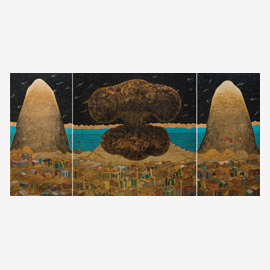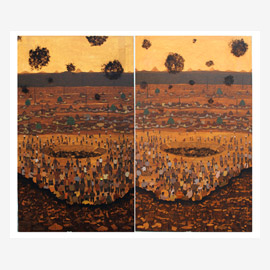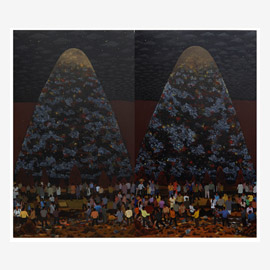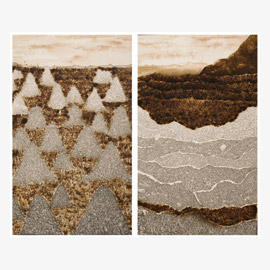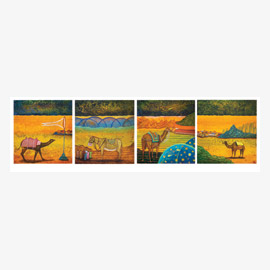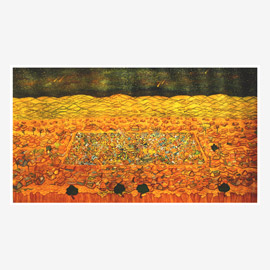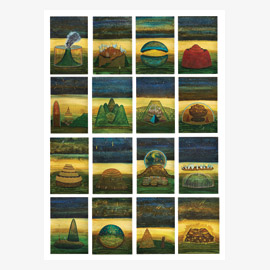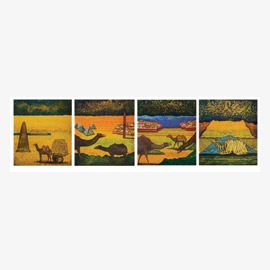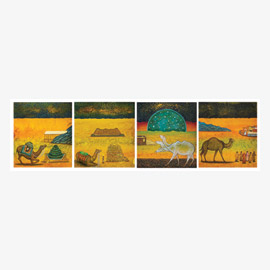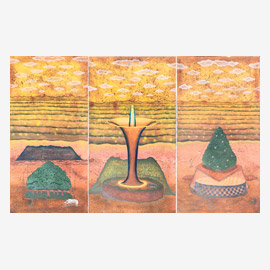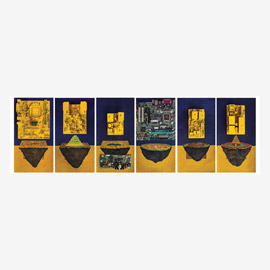A Solo Exhibition of Paintings by Ravi Kumar Chaurasiya
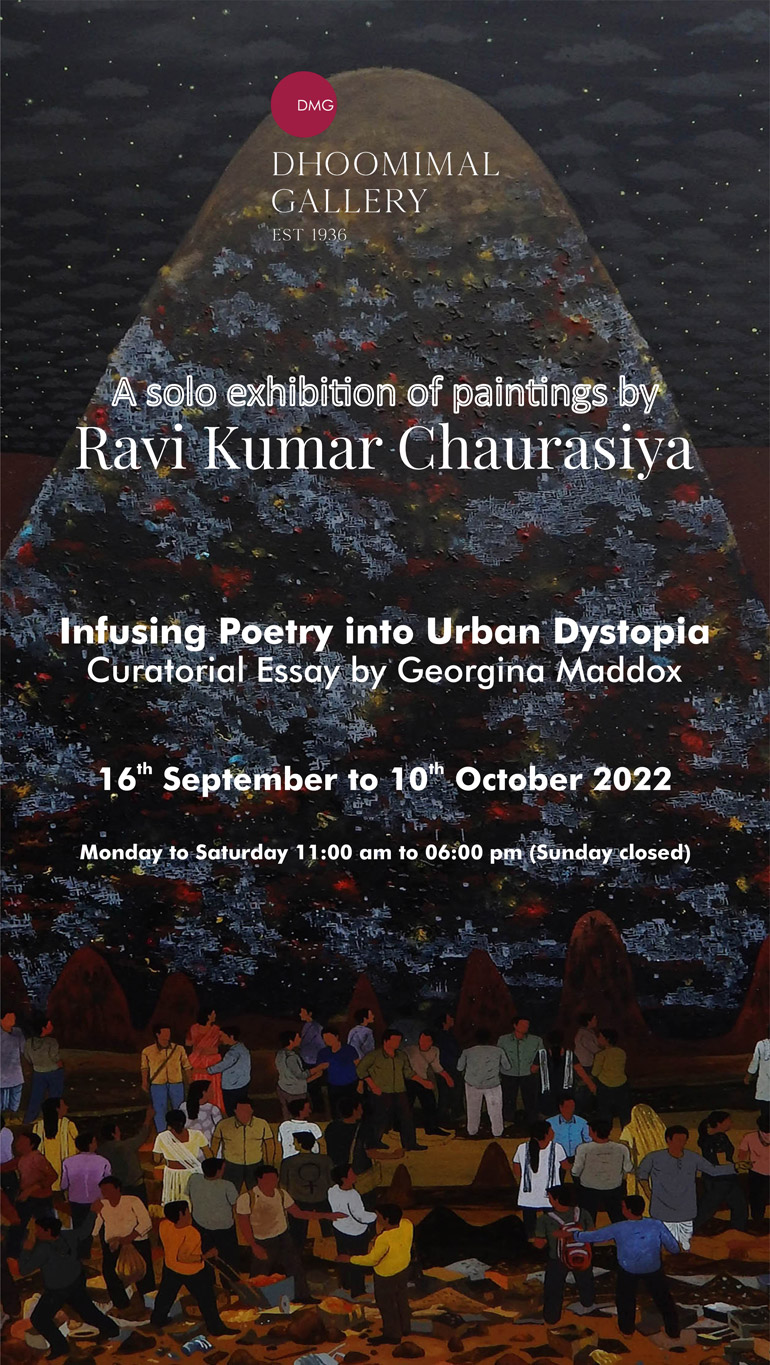
Infusing Poetry into Urban Dystopia
Artist Ravi Kumar Chaurasiya brings to his work the duality of development addressing how urban concretization and unplanned cities creates waste and denudes nature. His paintings are mostly figurative but they are not 'academically realistic', they do carry elements of folk and miniature in their stylization. His concern for the environment is well documented and he combines his lived reality with elements of research in the...
Infusing Poetry into Urban Dystopia
Artist Ravi Kumar Chaurasiya brings to his work the duality of development addressing how urban concretization and unplanned cities creates waste and denudes nature. His paintings are mostly figurative but they are not 'academically realistic', they do carry elements of folk and miniature in their stylization. His concern for the environment is well documented and he combines his lived reality with elements of research in the field so that the artwork that he executes is factually significant and emotionally moving. His work conveys a sense of angst and yet adds poesy to the human condition. While his landscapes appear idyllic at first glance, one may unpack them to discover that the artwork is actually packed with hidden references to urban waste and pollution under the playful and expressive appearance of the artwork.
Urban waste impacts all aspects of our lives, the air, the soil and the waters. It impacts the quality of our lives in terms of biodegradable material and the addition of nutrients, which contribute to eutrophication, which is a good process however also cause too many plants to grow on the surface of the water because of the chemicals that are used to fertilize plant-life and spread through rain and air. It leads to an imbalance of the natural forces that are often delicate and need attention but go unchecked leading to drying out of even natural ponds and smaller rivers.
Hailing from the township of Yusufpur in the Ghazipur district of Uttar Pradesh, Chaurasia belongs to a working class family and he has faced challenging socio-economic conditions. He has had to struggle to complete his art education and it is with dedication, scholarship and support that he has finished his Masters at Jamia College of Art in Delhi after his bachelors at Banaras Hindu University (BHU). The city of Banaras formed an important part of Chaurasia's emotional landscape, for it was here that he began visiting the Ghats, sketching on his own and it is here that he created the 'dog series', a study of the stray dogs that populated the Ghats and befriended him. It is here that he was led to discover animals as 'fellow compatriots' and who he 'shared the planet with'. One experiences that sense of camaraderie with animals, even in the way that he renders his study of the beast of burden like camels, a donkey, birds, trees hill-tops the earth's crust and the night sky filled with stars, that possess a sensitivity in the manner in which they are rendered.
“It's very easy to dream, but it's very hard to turn dreams into reality,” says Chaurasia. Such is the ambition and the potential that Chaurasia has been gripped by, ever since he has been struggling to eke out his survival in the big city. He now speaks of human accountability and brings to it the actuality of his lived situations. Delhi is currently his city of residence but the metaphor he still carries through his artwork relates well to difficulties of small town life and the harsh realities of unplanned urban-rural development. His painterly language has evolved from just working with mainly canvas to now including found object of computer e-waste that he has converted into aesthetic elements which he incorporates into his work as part of his artistic expression. His current body of work focuses on waste and the darker side of the human condition in relation to our environment.
Chaurasia works sometimes feature a large hill-like structure or a mushroom shaped cloud with the textures that are created with matchstick heads where he transfers the burnt-out effect of the matchstick onto the canvas and textures the surface indicating how this constant sense of burn-out finally affects the climate. He is also currently working with E-waste workers, interviewing them and getting a slice of their life. During his I am researching and brining that into my art through the residency, the day to day life of the people working in E-Waste.
Chaurasia addresses the issue of class in his work, for he often feels that 'development' has been glossed over as this 'amazing process' without taking into consideration the pitfalls of blind capitalist grown that does not always keep the interests of humankind and nature at heart. Rather it is focused on profit and sales. Unplanned development leads to forced migrant-labour that further leads to the development of 'slum areas in the city' and that too leads to unequal and often unhygienic 'growth'. Population needs to be well planned and located in the city in a systematic manner where even those who chose economic living have a place to stay and they do not end up in the underdeveloped slums of the city living o_ the margins of society.
